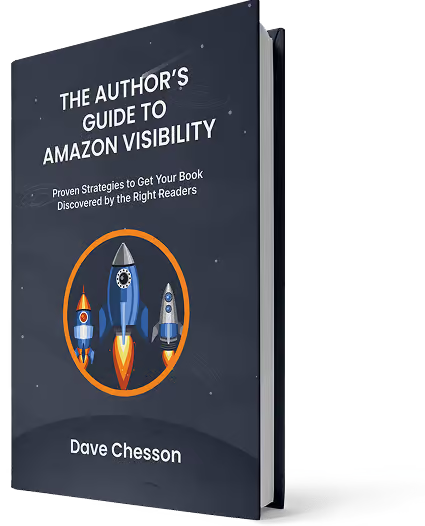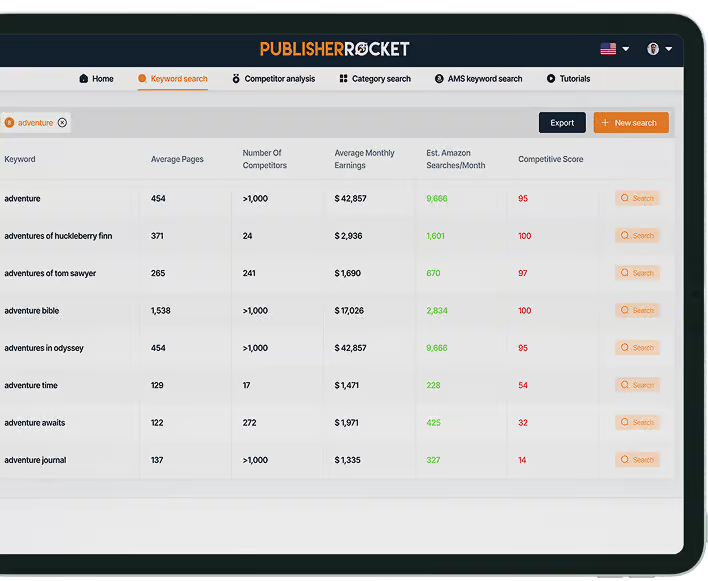Epilogues have been hanging around since ancient Greece. Playwrights used them to wrap things up or flash forward a few years so audiences could see how everyone turned out. The word itself comes from the Greek epilogos, which literally means “concluding word.” Pretty on the nose, right?
But if you’re a writer, you need more than a vocabulary lesson. An epilogue isn’t an epigraph (easy mix-up) and it’s not just tacked on for fun. Done well, it can give your story an extra punch of closure readers didn’t even know they wanted.
- What an epilogue is
- How to use an epilogue in your book
- Some great examples of epilogues
- How to write an epilogue yourself
Why Should You Trust Me?
I’ve been writing and formatting books for over a decade. But that alone doesn’t mean much… plenty of authors with years under their belts still get tripped up on the nuts and bolts of book structure.
Here’s why I can help: I wasn’t satisfied with the formatting tools out there, so I built my own.
It’s called Atticus, and creating it meant digging deep into every piece that makes up a book, from the front matter to the back matter and everything in between.
Spoiler: there were way more parts than I expected.

That crash course taught me a lot, and yes, epilogues were on the list. So when I walk you through what they are and how to use them, you can trust it’s coming from a mix of hands-on experience and obsessive research.
Ready? Let’s dive in.
What is an Epilogue?
An epilogue is the extra scene that comes after the main story ends (the “what happened next” moment). Think of it as tying up loose ends once the big climax is over.
Epilogues show up most often in novels, but you’ll also see them in memoirs and on the big screen. Shakespeare used them as closing speeches or short poems.
These days, they’re more likely to take the form of a final scene that leaves the reader with closure.
Epilogue vs. Afterword
Writers sometimes confuse the two. An afterword is the author reflecting on the book… how it came to be, what inspired it, maybe even how readers have responded. An epilogue is still part of the story itself. It’s the narrative’s final bow, not the author stepping out on stage.
Characteristics of a Good Epilogue
Epilogues look different depending on genre, but the best ones tend to:
- Run shorter than a normal chapter (though there’s no strict rule)
- Take place after the climax or falling action, often giving us one last look at the characters’ lives
- Shift the point of view to provide a fresh angle on the story
- Use a slightly different tone from the main narrative (reflective, bittersweet, or hopeful)
Epilogue Definition in Practice
If you decide to write one, an epilogue should do at least one of the following:
- Show where the protagonist ends up down the road
- Offer extra character development once the main arc is finished
- Plant seeds for a sequel (without dangling readers off a cliff)
- Give readers a chance to release the tension from the climax
- Tie up small loose ends or satisfy curiosity about major characters’ fates
If your ending already covers these bases, you may not need an epilogue at all. But if something’s left hanging (and you know readers will want closure), that’s when an epilogue earns its keep.
Do You Have to Write a Prologue to Have an Epilogue?
You do not have to write a prologue to have an epilogue. There are plenty of great pieces of literature that have a prologue and no epilogue, and vice versa. But, you can have both if it works for your story. Ultimately, the use of both an epilogue and a prologue is up to the writer.
Not familiar with all the different parts of a book and what they’re called? Check out this article on the parts of a book!
Does an Epilogue Count as a Chapter?
Technically, the epilogue is counted as a chapter. It shows up in the table of contents (in those books that have them) and, when present, is considered a part of the narrative.
Unlike an afterword, which the reader is free to skip without worry of missing some important factor in the lives of the characters, the epilogue is read as a final ending to the book. The last word, so to speak.
Can an Epilogue Have a Title?
There’s no set rule for epilogues and titles. Some epilogues do have chapter titles (and numbers) while others are defined simply and succinctly as “Epilogue.” Including a title for an epilogue is up to the author.
7 Great Epilogue Examples
Now let’s look at a few memorable epilogues from popular books.
(Fair warning: spoilers ahead.)
1. The Forever War by Joe Haldeman
Haldeman’s classic sci-fi novel closes with an epilogue that’s short but powerful. Presented as a news item, it shows William Mandela finally free from war, settling into family life on a peaceful garden planet. After all the chaos of interstellar conflict, the ending delivers quiet resolution (proof that an epilogue doesn’t have to be long to hit hard).
2. Leviathan Wakes (Book 1 of The Expanse) by James S.A. Corey
Unlike Haldeman’s, this epilogue is much longer. Told from Fred Johnson’s point of view (a character we never enter during the main story), it reflects on political tensions between Earth, Mars, and the Belt. The disaster has been averted, humanity is saved… but it’s clear the fight isn’t over. It’s both a conclusion and a springboard into the next book.
3. Harry Potter and the Deathly Hallows by J.K. Rowling
One of the most famous modern epilogues, the “Nineteen Years Later” scene jumps forward in time to show Harry, Ron, and Hermione as adults sending their own kids off to Hogwarts. Some readers loved the closure, others weren’t fans of the neat bow, but no one forgot it. That’s the power of an epilogue done boldly.
4. The Hunger Games: Mockingjay by Suzanne Collins
Collins ends her trilogy with a bittersweet epilogue. Years later, Katniss is raising children with Peeta, still haunted by trauma but also finding moments of peace. It’s a reminder that happy endings aren’t always simple. Sometimes they’re complicated, and that’s okay.
5. The Martian by Andy Weir
After the high-stakes survival drama on Mars, Weir uses the epilogue to give readers a breather. We see Mark Watney safely back on Earth, reflecting on humanity’s instinct to help one another. It’s a hopeful, uplifting note that contrasts the tension of the main story and leaves readers with inspiration as well as relief.
6. Animal Farm by George Orwell
Orwell’s epilogue drives home the allegory. Years after the rebellion, the pigs are indistinguishable from the humans they replaced, hammering home the futility of the revolution. It’s a chilling final note that lingers long after the last page.
7. Moby-Dick by Herman Melville
Melville’s epilogue is brief but essential. It reveals how Ishmael survived the wreck of the Pequod — turning what could have been a hopeless tragedy into a story with a lone, haunted survivor to tell it.
What these seven epilogues have in common isn’t length or style (some are a page, others a full chapter). It’s that each one gives the story a final beat the main ending couldn’t deliver on its own.
Whether it’s closure, a time jump, or a hint at what comes next, a strong epilogue leaves readers satisfied and thinking about the book long after they’ve closed it.
How to Write an Epilogue
Before you start writing an epilogue, it’s best to decide if you need one or not. And in order to determine this, you should already have the rest of your book fully written.
To further help you decide, I’ve included a few questions to ask about your book before you start writing your epilogue:
- Are there any (minor) loose ends you need to tie up after the conclusion?
- Are epilogues normal in your genre? (Books with “The End” typically don't have an epilogue.)
- Does it feel like there’s more that needs to be said after the final chapter of your story?
- Do you need to set up a sequel or the next book in the series?
Keep in mind while you're writing that your epilogue has to serve some purpose. If you don’t know what that purpose is, you probably don’t need an epilogue.
If you’re not sure, you can ask your beta readers how they felt at the end of the story. If they are wondering about secondary characters or storylines, you may need to write one.

Tips for Writing an Epilogue
Here are a few tips to get you started on writing your epilogue.
- Decide on POV. Who will be the point of view character? What type of POV will you use when writing the epilogue?
- Decide what information you wish to convey. Like the rest of a novel, this is no place for an info dump. Use all your skills as an author to avoid a clunky epilogue.
- Keep it as short as possible.
- Carefully set up the next book. If you’re writing a sequel, the epilogue can be a good place to set up the next book in the series by piquing the audience's curiosity (but not with a big cliffhanger).
If it serves your genre and your story to write an epilogue, then you should. Use your gut feeling as a writer, along with the tips above. Think about them when writing the meat of your story.
An epilogue is a literary device that is well within the bounds of “normal” practices for any writer.
Video: What is an Epilogue and How to Write One
For a nice summary of this article, I've put together an exclusive video just on this subject! In this video, I go in deep into the role that an epilogue plays in your book, alone with how to write your own. You can check it out here:

Want more videos like this? Be sure to subscribe to my YouTube channel for weekly videos!






